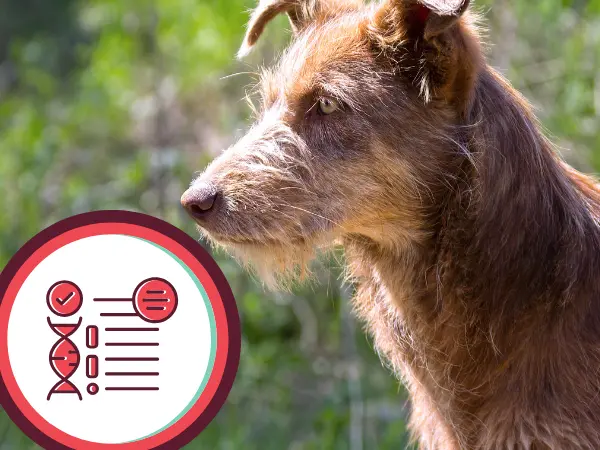Did you know that dog poop can give clues about a pup’s health? Understanding the various colors, textures, and contents of your dog's poop can give clues; some of which may signal that a pup is healthy and well — or that a visit to the veterinarian is needed.
In this article, we'll explore the spectrum of healthy vs. not-so-healthy dog poop colors and textures — we will discuss what each dog poop color and texture could mean. In addition, we will also cover dog pooping frequency, which is an important factor to observe alongside the dog poop’s physical characteristics.
A. What Does Healthy Dog Poop Look Like?
This section talks about the texture and color of healthy dog poop — along with the healthy frequency of elimination for dogs, based on their age.
1. The Texture & Color of Healthy Dog Poop
A healthy color (and texture) of dog poop indicate a balanced diet, good hydration, and proper digestion.
Healthy dog poop is generally chocolate brown — this color is due to the presence of bile, a compound produced by the liver that assists in the digestion of fats and lipids. As bile travels down the intestines, its color changes from yellow-green to chocolate brown.
When it comes to texture, healthy dog poop has a firm but not too hard consistency and is well-formed.
2. Can Diet Change Stool Consistency?
Yes, diet can significantly affect a dog's stool consistency. A balanced diet with the right nutrients promotes healthy digestion in dogs. In addition, factors like fiber content, protein sources, fat levels, and hydration impact stool firmness or looseness.
Likewise, sudden diet changes may also cause temporary diarrhea, which is why most vets recommend transitioning gradually when switching dog food.
3. The Healthiest Frequency: How Many Poops a Day is Normal for a Dog?
The frequency of a dog's bowel movements can vary based on factors such as age, size, diet, and health. In general, most adult dogs poop 1 to 2 times a day. Typically, dogs will need to poop after 8 - 12 hours after eating.
Puppies and senior dogs may have different frequencies of going to the bathroom. Puppies can poop around 5 times a day or more, depending on their age. Meanwhile, senior dogs may need to poop only once a day.
Note: Call a veterinarian if your puppy has not gone to the bathroom in 24 hours — or if your adult dog has not been able to poop in 2 days.

B. Unusual Colors & Textures of Dog Poop — and When to Call the Vet
In the previous section, we talked about the key things to know about healthy dog poop and the right frequency of going to the bathroom.
In this section, we will talk about the colors and textures that may signal a health issue.
1. Dog Poop is Green - Monitor Your Pup
Green dog poop might be a result of your dog consuming grass or plenty of greens — but it can also signal issues like a rapid transit time through the digestive system or a gall bladder issue, resulting in higher bile content in the dog poop.
In many cases, one-off green poop due to diet is not a cause of concern. However, persistent green poop should be brought up with a vet to rule out any possible underlying issues.
2. Dog Poop is Yellow or Orange - Monitor Your Pup
Orange or yellow dog poop may be attributed to the consumption of certain foods or supplements. However, persistent orange or yellow poop could indicate issues with the dog’s biliary or pancreas system — which are essential components in the digestive system.
If your dog’s poop is persistently yellow or orange, consulting with a veterinarian will help identify the root cause and determine the appropriate course of action.
3. Dog Poop is Gray or White - Consult a Vet
Gray dog poop or white dog poop indicates that the dog poop does not have its usual pigment which comes from bile. Therefore, these colors of dog poop suggest that there is an underlying health issue related to the biliary or pancreas system.
If you observe gray or white poop in your canine companion, it's crucial to consult with a veterinarian promptly. A thorough examination and appropriate diagnostic tests can help give timely care for your pup.
4. Dog Poop is Black - Consult a Vet
When dog poop is black, it is a cause for concern. This color may indicate the presence of digested blood in the stool, suggesting bleeding in the upper digestive tract.
If you notice black poop in your dog, it's crucial to consult a veterinarian promptly to identify and address the underlying issue.
5. Dog Poop with Red Streaks (Dog Pooping Blood) - Consult a Vet
Blood may appear on dog poop if there is a small tear near the dog’s anus or inflammation on the lower intestinal tract (colitis in dogs). Blood in dog poop could also be a sign of infections, parasites, or tumors in the intestinal tract.
If you find dog poop with red streaks or dog poop with blood, an urgent visit to the veterinarian is crucial for a proper diagnosis and prompt treatment.
6. Dog Poop with Grass - Monitor Your Pup
When dogs eat grass, it typically appears in their stool; this is because dogs lack the enzymes to digest grass. Some dogs simply like the taste of grass — while other dogs may consume grass to try to soothe gastric upset or nausea. In other cases, dogs may also try to eat grass to add more fiber to their diet.
If your dog eats grass suddenly or in unusually large quantities/frequency, this may signal a health problem. Reach out to a veterinarian for guidance on the next steps.

7. Dog Poop with Mucus - Monitor Your Pup
Dog poop with mucus looks like dog poop coated partially or totally in a film of mucus. Dog poop with mucus may be a sign of infection or inflammation in the gastrointestinal tract. The mucus may also occur due to parvovirus or parasite infestation.
Many pet parents ask: “When should I worry about mucus in my dog's stool?” The answer: if you notice persistent mucus (24 - 48 hours), along with other concerning symptoms (e.g. lethargy, bloating, sudden fever), a prompt visit to the vet is recommended to identify and treat the underlying cause.
8. Dog Poop with Worms - Consult a Vet
Worms in dog poop means that the dog is suffering from a parasitic infection. The most common dog worms to appear in dog poop include roundworms and whipworms.
However, the absence of worms in dog poop does not necessarily mean that worms aren’t present. Other species of worms (i.e. hookworm, tapeworm) are more likely to appear in dog vomit. Meanwhile, one of the most life-threatening internal dog parasites, the heartworm, may NOT show up on stool or vomit at all.
Intestinal parasites in dogs typically do not heal or resolve on their own. An experienced veterinarian will be able to give the dog the deworming treatment necessary.
→ Learn More - Types of Worms in Dogs (& How to Detect)
9. Dog Poop with White Spots - Consult a Vet
White spots in dog poop may be undigested grains in some cases. However, if the white spots look like rice and are moving, they may be what’s known as ‘proglottids’, a segment coming from a tapeworm, which contains tapeworm eggs. It is NOT usual for entire tapeworms to be passed in a dog’s stool. These worms, however, may appear in the dog’s vomit if the infection is severe.
It is recommended to consult a veterinarian if a pup produces dog poop with white spots. Veterinarians will be able to give the most effective treatment — they may also inspect for and treat fleas, which are known carriers of tapeworms in dogs.
→ Learn More - Types of Worms in Dogs (& How to Detect)
10. Hard and pebbled, Dry, & Hard to Pass - Monitor Your Pup
When a pup's stool is hard, pebbled, dry, and difficult to pass, it could be indicative of constipation —which may arise due to dehydration or lack of fiber in the dog’s diet.
Monitoring your pup's stool consistency is crucial in preventing discomfort and addressing potential health concerns promptly. It would be best to call a veterinarian if the issue persists.
11. Log-Shaped, Soft, Leaves Residue - Monitor Your Pup
Dog poop that is log-shaped but is soft, leaves a residue, and doesn’t hold its form may signal issues such as dietary intolerance or an imbalance in gut bacteria.
This issue may be a one-off concern but if it persists, it could suggest that your dog’s nutrition may need to be optimized for their needs. Schedule a nutritional consultation with a veterinarian to find the best food for your pup!

12. Liquid Dog Poop (Diarrhea) - Monitor Your Pup
There are a variety of reasons why dogs experience diarrhea. Diarrhea in dogs can be due to sudden dietary changes, pet food allergies, infections, pancreatitis, antibiotics, and more.
If your dog experiences diarrhea, monitor their condition. Severe diarrhea or diarrhea that persists for more than 12 hours would need urgent veterinary care to prevent life-threatening dehydration.
Final Thoughts on Healthy vs. Unhealthy Dog Poop
We trust that you found this complete guide on healthy vs. unhealthy dog poop helpful. Pet parents can detect certain health clues by simply looking at their dog’s poop.
Veterinarians take this a step further with detailed veterinary fecalysis, which encompasses laboratory tests to assess a pup’s condition based on what’s present in their stool. Veterinarians also look at clinical symptoms that could be accompanying unusual dog poop colors and textures, allowing them to make helpful, professional recommendations for your pup’s well-being.
Get All-in-One Care for Your Dog at Sploot Vets
If you have further questions or concerns, we’re always here for you. Sploot Veterinary Care provides all-in-one veterinary care, with primary care, urgent care, and emergency vet services all under one roof! We have multiple convenient locations in Denver, Chicago, and Colorado Springs. Our clinic doors are open 365 days a year, with extended daily hours.
Schedule an appointment here or via the Sploot Vets app. Till next time, we’re with you every pounce of the way!
Note: Feel free to refer to our Poo's Clues Cheat Sheet, an infographic that illustrates the various colors and textures of dog poop and what they can potentially mean for a pup's health.







